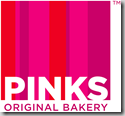Excuse me? That’s right….Is. Your. Logo. Sexy.
“But, Maria, I sell packaged software apps to enterprise customers.” or “I provide coaching services.” What do those have to do with being sexy?
By sexy, I mean sophisticated, expressive, uniquely “yours” in the minds of your target audience. “Sexy” is in the eye of the beholder, for sure, but you just need to make sure it’s sexy within your marketspace.
Guest blogger Nancy Owyang, creative director of Eye2Eye Graphics has created a funky assessment to judge your logo’s “it’ factor. She also has some tips to share with us on what makes a logo effective. If you’d like to receive her PDF assessment, please drop her an email at nancy@eye2eyegraphics.com.
Is Your Logo SEXY?
Five Key Ingredients to an Effective Business Logo
By Nancy Owyang
First impressions have the ability to quickly make or break a deal. If you dress to impress for a first meeting with an important business client, doesn’t it make sense for your logo to always put your best foot forward? Having a “SEXY” logo is not just about looks—it’s so much more! It’s about pride, confidence, and knowing that your logo is telling your best story.
Your logo is the most visible way for current or prospective customers to recognize you, know what you do, and how well you do it. Here are five key concepts to ensure a quality, successful logo that reaches your ideal clients and brings the “SEXY” back to your business’s brand identity.
1. Is your business having a visual identity crisis? Your business should have a clearly defined identity with one logo and style that appears on your business cards, stationery, brochures, newsletters—indeed, all your marketing materials. Consistency sends the message that your business is stable and dependable. Your logo needs to visibly represent a business that is professional, successful, and at the top of its field.
2. Is your logo unique to your business? Just as your business is special and unique, your business’s “picture” needs to say “unique” as well. A professionally designed logo will ensure a meaningful identity mark that is memorable and captures the essence of your business.
3. Is your logo breaking the bank? Printing business cards, postcards and other promotional materials can be a major expense. Using color, as beautiful as it is, can be challenging price-wise; the more colors in the design, the more it can cost to produce.
4. Is your logo too complicated? A simple mark is easier to remember than one that is extremely intricate—two good examples are Target® and Nike®. Your logo must be “scalable” and look just as good in a small image on an ink pen as it does on a 10-foot tall billboard. Make sure that your logo also works in black-and-white to allow for maximum flexibility in printing choices.
5. Does your logo have a photographic image in it? Stay away from photographic images in your identity mark; difficult to reproduce and re-size, they often appear fuzzy. And always make sure your logo retains its integrity and legibility when photocopied or faxed; test it on the nearest black-and-white copy machine.
Take an eye-2-eye look at your logo; is it a worn out t-shirt or your professional best? Your logo is a key part of your business identity, communicating an image of your business. Is it the best one? Use these tips to ensure that your logo puts your business’s best foot forward—and moving towards success!
 I love it when I find cool new branding while I’m out and about. Case in point: my neighborhood Tully’s has been promoting their new bakery items, which are supplied by Seattle’s Pink’s Original Bakery. With the colorful pink striped banners hanging up in store, I just had to grab their brochure. And when I opened it, I found another example of what I mean when I say “delight your audience.”
I love it when I find cool new branding while I’m out and about. Case in point: my neighborhood Tully’s has been promoting their new bakery items, which are supplied by Seattle’s Pink’s Original Bakery. With the colorful pink striped banners hanging up in store, I just had to grab their brochure. And when I opened it, I found another example of what I mean when I say “delight your audience.”


